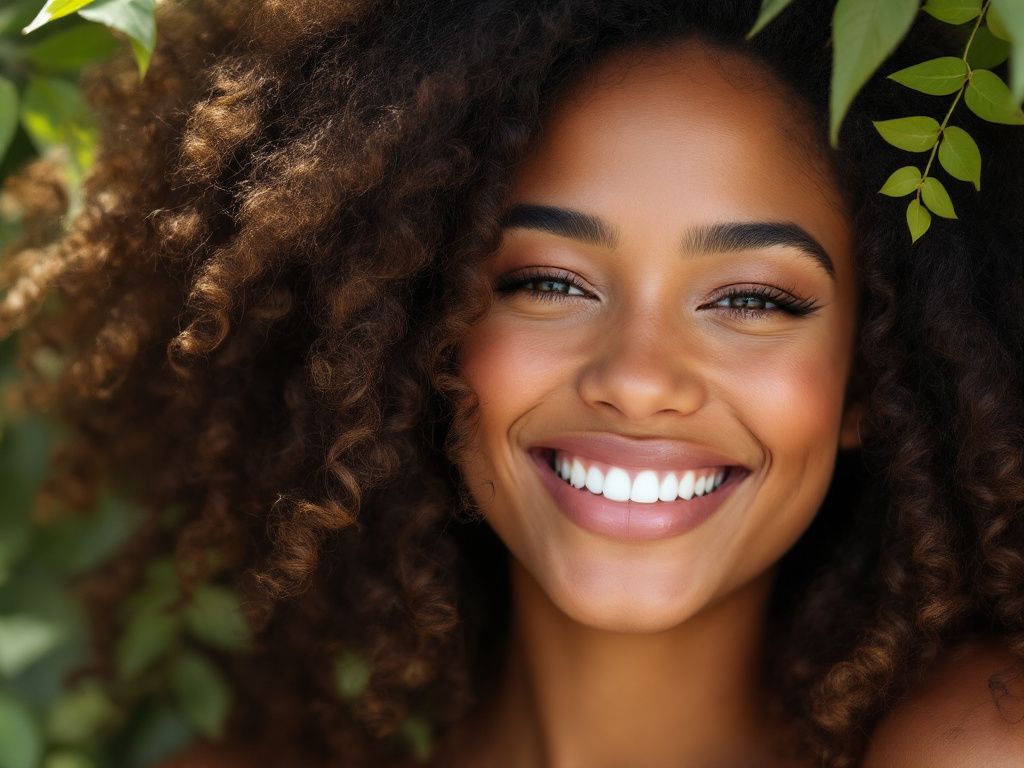
In the pursuit of maintaining luscious curls, many environmentally-conscious individuals face an often overlooked dilemma: product waste. Given the unique care that curly hair demands, it’s imperative to address the significant environmental impact of curly hair products. This guide will explore how industry standards are evolving to meet these challenges and provide actionable advice to create a sustainable curly hair care routine.
Understanding the Challenges of Curly Hair Care
People with curly hair often navigate a myriad of products, each promising to tame frizz, define curls, or enhance moisture retention. However, the demand for these products has inadvertently contributed to product waste. 🚿 According to a 2022 report by Grand View Research, the global hair care market size was valued at over $91 billion, with a significant portion allocated to specialty curly hair products.
The Environmental Cost of Curly Hair Products
Most curly hair products come in plastic packaging, contributing to the ever-growing environmental concern of plastic pollution. Furthermore, many formulations include ingredients that are not sustainably sourced or biodegradable. A study by the Journal of Waste Management indicates that non-degradable cosmetic containers account for a substantial share of landfill waste. This calls for a critical need for sustainable innovation in packaging and formulations.
Technological Innovation: Leading the Charge Toward Sustainable Curly Hair Products
The beauty industry is seeing a shift towards sustainable practices, with key players setting new standards for eco-friendly production. Let’s delve into some of the groundbreaking approaches and technologies fostering this change.
Sustainable Formulations
Sustainable formulations in curly hair products typically emphasize biodegradable and naturally-derived ingredients. Such products not only reduce the chemical footprint but also ensure safe usage for consumers and minimal environmental impact. 🌿 In a collaboration between Eco-Friendly Engineer LLC and leading product manufacturers, a pilot study revealed a significant reduction in the carbon footprint when switching to naturally-derived polyglycerol esters as an emulsifier, sharing an alternative to petrochemical derivatives.

Case Study: Aveda’s Commitment
Aveda, for instance, asserts a trademark commitment to using 100% post-consumer recycled PET for product packaging where feasible. They’ve also pioneered formulas free from parabens, phthalates, and artificial fragrances, drastically cutting down chemical leaching into waterways.
Advanced Packaging Solutions
Innovative packaging solutions are fundamental to tackling plastic waste. TerraCycle embarked on a project called “Loop,” initiating a first-of-its-kind system for shampoo bottles implemented in partnership with leading curly hair product manufacturers. This project allows customers to return used containers for cleaning and refilling, embodying a circular economy approach.
Practical Steps to Developing a Sustainable Curly Hair Routine
Armed with insights into industry innovations, individuals can modify their hair care routines to reflect sustainable practices. Here’s how:
1. Mindful Product Selection
Carefully select products with eco-certified labels, such as Cradle to Cradle or ECOCERT, which guarantee sustainable sourcing and manufacturing. While browsing, scrutinize ingredient lists for synthetic fillers or non-degradable compounds.
2. Optimize Product Usage
The frequent overuse of products is common. Implement strategies like “praying hands” and “squish to condish,” which promote even distribution, reducing the amount required per application.
3. DIY Solutions

Expanding your routine with homemade hair treatments can be both sustainable and economical. DIY flaxseed gel, for instance, is an effective curl enhancer, offering benefits with minimal environmental cost.
Recipe: Simple Flaxseed Gel
- Ingredients: 1/4 cup flaxseeds, 2 cups water
- Instructions: Boil water and flaxseeds for 10 minutes, then strain seeds. Optional: add natural oils or aloe vera gel post-cooling.
- Usage: Apply to wet hair for definition and hold.
Industry Insights
A broader adoption of sustainable practices can be pivotal in setting new industry standards. Continual insistence on certified processes among manufacturers can drive widespread market transformation. The Cosmetics Sustainability Packaging Council has set guidelines that advocate for reusable, recyclable, and compostable materials, aiming for a 70% reduction in landfill waste by 2025.
Case Study: DevaCurl’s Green Journey
DevaCurl, a standout in the curly hair industry, has aligned its products with CarbonNeutral Certification goals. By utilizing green energy for production and innovating in waterless formulations, they have contributed to significant reductions in environmental footprint, setting a benchmark for competitors.
Real-World Applications and Statistical Evidence
Impact Metrics
- Reduction in Waste: Conversion from single-use to refill solutions could, annually, prevent an estimated 1.3 billion plastic containers from entering the waste chain, per **Pacific Institute Research.
- Sustainability Adoption: A **2023 survey by the National Inventory of Safe Drugs found that 78% of consumers are willing to switch to eco-friendly alternatives when informed about environmental impacts, underscoring potential market shifts.
Corporate Contributions

CocoSoul’s Sustainability Initiatives
CocoSoul’s commitment to fully plant-based ingredients and utilizing upcycled coconut waste for exfoliating applications demonstrates responsibility and innovation that cut emissions while delivering highly-effectual products.
Developing Professional Practices for Organizations
To further advance in sustainable practices, organizations need to:
- Integrate sustainability metrics into their supply chain audits.
- Invest in new-material research, fostering non-polluting, regenerative product cycles.
- Establish collaborations for regional bio-waste management to repurpose product residuals, enhancing sustainability scores outlined by **ISO 14000 standards.
Conclusion
For both individuals and corporations, shifting to a sustainable curly hair routine not only admirably addresses waste challenges but also enhances the beauty industry’s relationship with our increasingly fragile ecosystem. By prioritizing eco-conscious choices, we stand at a critical juncture in ushering in a changed conscience without compromising on curl care or quality. ♻️
The opportunity to re-imagine our role in sustainability could profoundly redefine craftsmanship and consumption practices within a billion-dollar market segment, paving the way for a resilient, eco-friendly renaissance.
—
In crafting sustainable practices, both micro-efforts by consumers and macro-innovations by brands contribute to a future where curly hair care aligns harmoniously with environmental imperatives.
Frequently Asked Questions
What are the benefits of using a hair mask in my hair care routine?
Using a hair mask can provide several benefits, including hydration, smoothing, strengthening, curl definition, heat protection, and damage repair. Hair masks infuse the hair with moisture, help coat the hair shaft to seal split ends, reduce breakage, and protect the hair from heat styling and environmental damage[1][4].
What ingredients should I look for in a hair mask?
Effective hair masks often include ingredients such as coconut oil, argan oil, shea butter, honey, avocado oil, green tea, and coconut water. These ingredients provide nourishment, moisturize, and protect the hair, offering benefits like softening, moisturizing, and protecting against damage[2][5].
How often should I use a hair mask in my routine?
You should use a hair mask whenever your hair feels dry, unmanageable, or in need of intense hydration. This can vary depending on your hair type and needs, but generally, using a hair mask once or twice a week can help maintain healthy and moisturized hair[1][4].
How do I apply a hair mask for the best results?
To apply a hair mask effectively, shampoo your hair first, then apply the mask, focusing especially on the ends where hair tends to be the most damaged. Leave the mask on for anywhere from 10 minutes to overnight, depending on the type of mask and your hair’s needs[1][4].
References

Leave a Reply